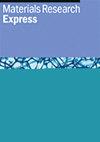Optimization and ranking of the input parameter settings of sustainable grinding using cashew nut shell liquid as cutting fluid
IF 2.2
4区 材料科学
Q3 MATERIALS SCIENCE, MULTIDISCIPLINARY
引用次数: 0
Abstract
The current work advocates the use of Cashew Nut Shell Liquid/Oil (CNSL), an oil extract of the leftover cashew nut shells, as a novel environment-friendly cutting fluid in sustainable machining operations. The tribological characteristics of CNSL obtained on a pin-on-disc tribometer are found to be better compared to the traditionally used cutting fluid. Experiments are conducted on the surface grinder with EN8 material, considering input parameters, such as cutting fluid type, grinder speed and grade, work speed, and depth of cut, with Surface Roughness (以腰果壳液为切削液的可持续研磨输入参数设置的优化和排序
腰果壳油是一种从剩余腰果壳中提取的油脂,目前的研究倡导在可持续加工操作中使用腰果壳油作为新型环保切削液。在针盘摩擦磨损计上获得的腰果壳油的摩擦学特性优于传统使用的切削液。实验在使用 EN8 材料的平面磨床上进行,考虑了切削液类型、磨床速度和等级、工作速度和切削深度等输入参数,并以表面粗糙度(Ra)和磨削温度(Temp)作为响应。输入参数优化采用田口统计模型。共进行了 36 次调查实验和 6 次验证实验,并提出了一个预测模型。当同时优化 Ra 和温度时,Ra 的预测值为 0.071 μm,相应的温度值为 31.6 °C,而实验值分别为 0.072 μm 和 32 °C。这项研究还应用了多属性决策方法 TODIM(TOmada de Decisao Interativa Multicriterio,葡萄牙语)对输入参数设置进行排序。研究结果表明,CNSL 的性能优于传统切削液,而且 TODIM 方法可成功用于对输入参数设置进行排序。
本文章由计算机程序翻译,如有差异,请以英文原文为准。
求助全文
约1分钟内获得全文
求助全文
来源期刊

Materials Research Express
MATERIALS SCIENCE, MULTIDISCIPLINARY-
CiteScore
4.50
自引率
4.30%
发文量
640
审稿时长
12 weeks
期刊介绍:
A broad, rapid peer-review journal publishing new experimental and theoretical research on the design, fabrication, properties and applications of all classes of materials.
 求助内容:
求助内容: 应助结果提醒方式:
应助结果提醒方式:


